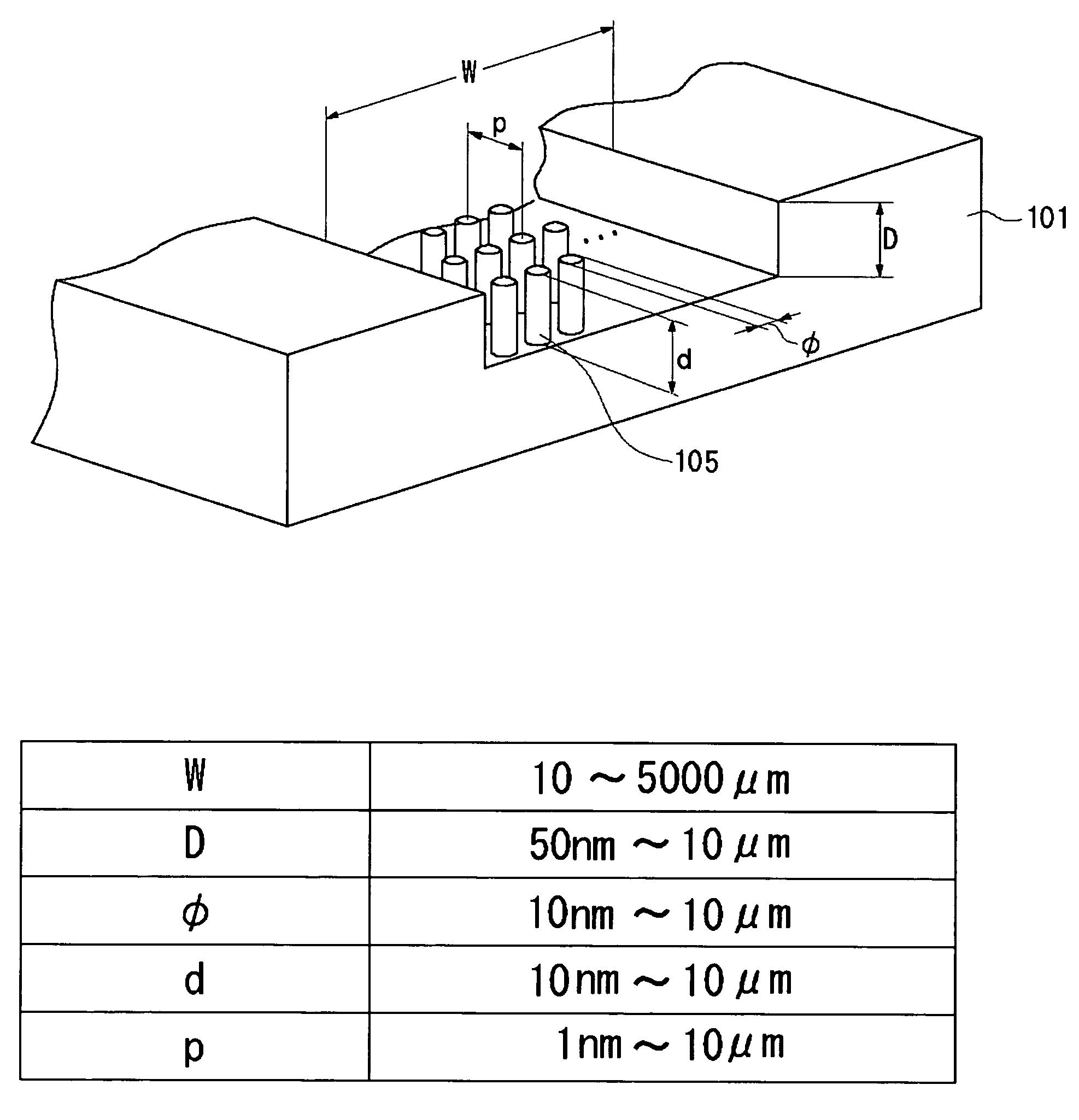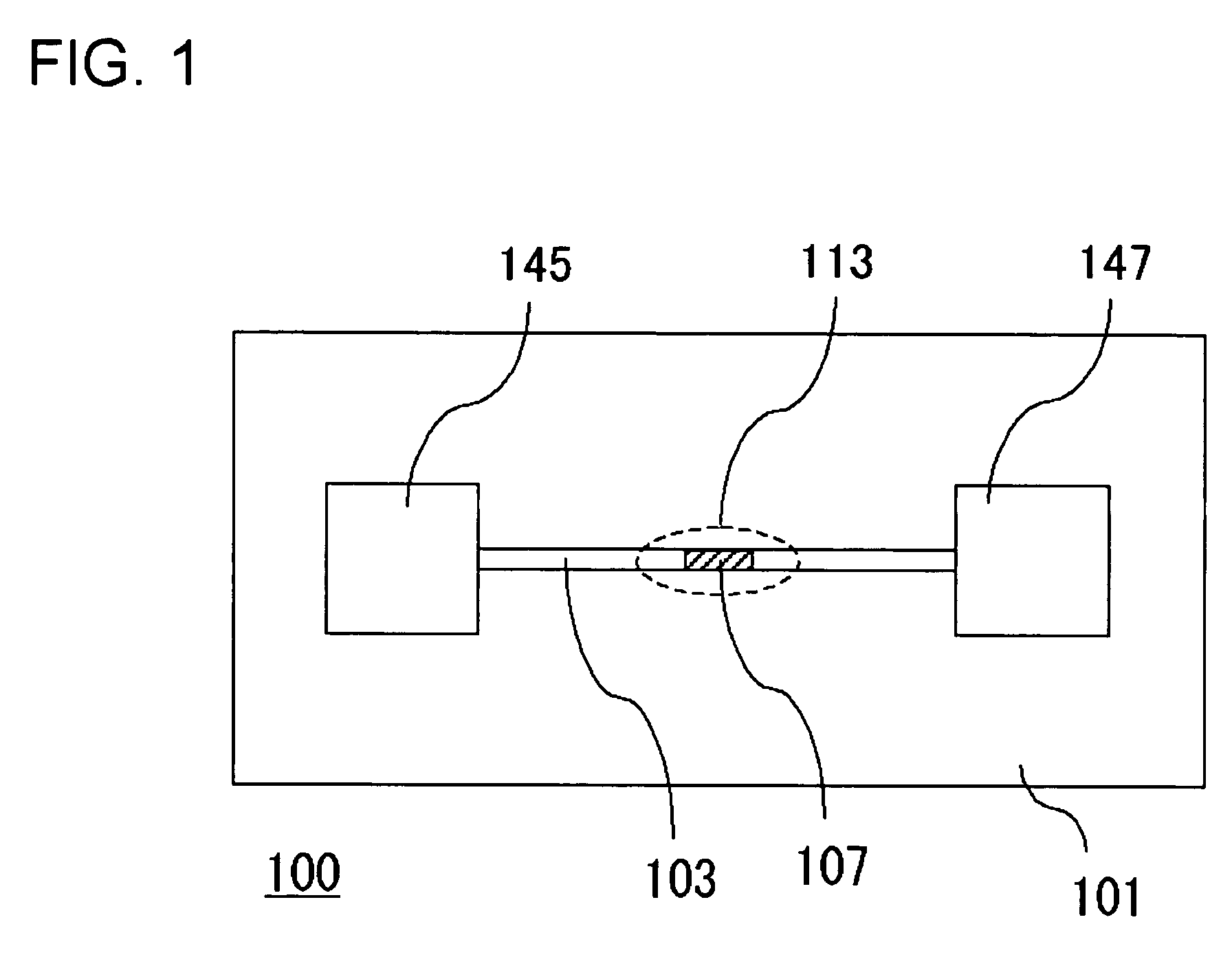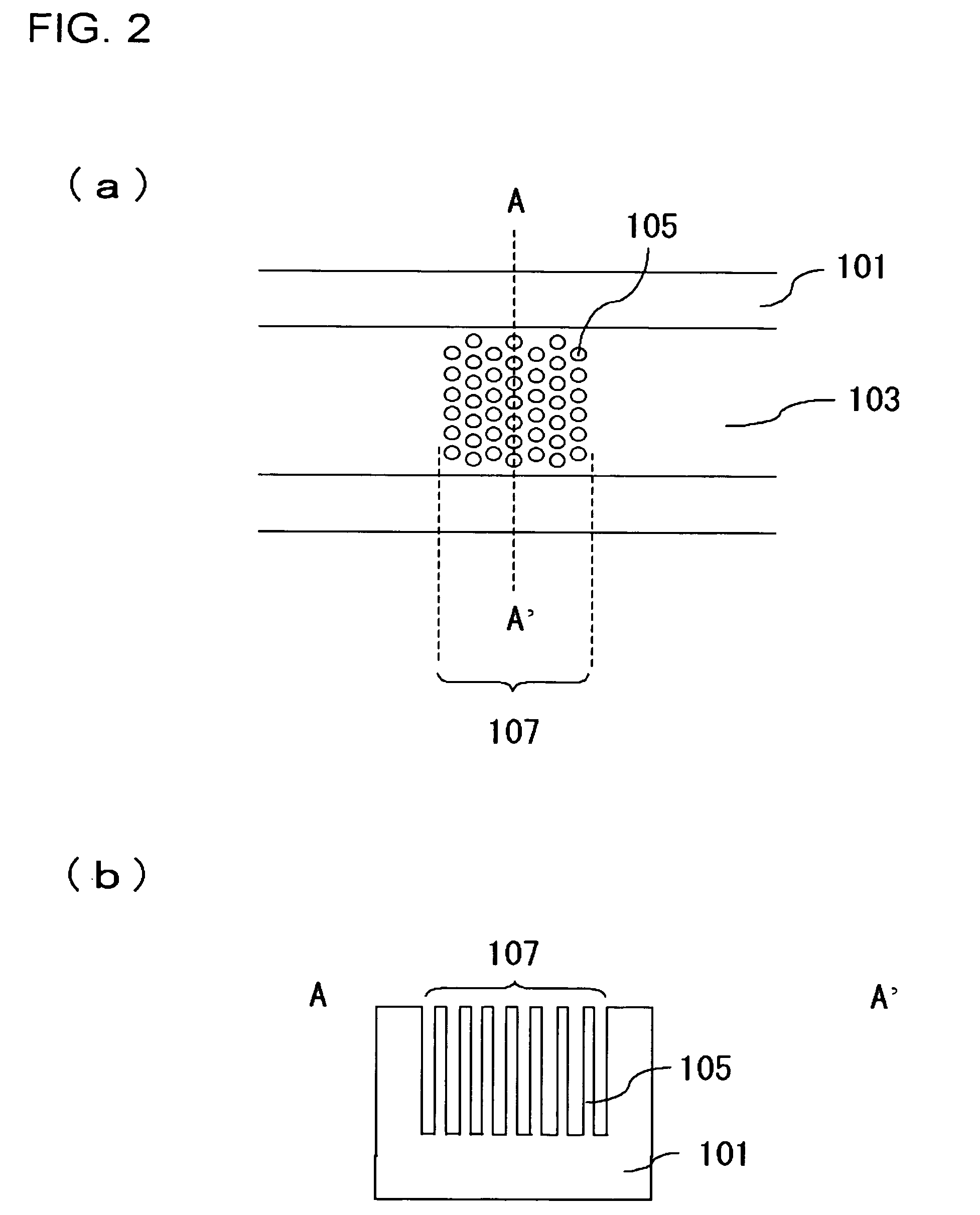Separation apparatus and separation method
a separation apparatus and separation method technology, applied in separation processes, laboratory glassware, instruments, etc., can solve the problems of generating irreversible denaturalization or deactivation or the like of the target substance, deteriorating separation efficiency, and not always suitable design for affinity chromatography that involves filling the column, etc., to achieve higher efficiency, higher activity, and high efficiency
- Summary
- Abstract
- Description
- Claims
- Application Information
AI Technical Summary
Benefits of technology
Problems solved by technology
Method used
Image
Examples
first embodiment
[0052]FIG. 1 is a top view of a separation apparatus 100 according to the present embodiment. In separation apparatus 100, a channel 103 is provided on a substrate 101, and a separating region 113 including a separating portion 107 is formed in a part of the channel 103. Further, both ends of the channel 103 are communicated with a sample introduction portion 145 and a fluid reservoir 147, respectively.
[0053] Here, an upper surface of the channel 103 may be coated with a coating member. Drying of a liquid sample is suppressed by providing the coating member on the upper surface of the channel 103. Moreover, when a component in the sample includes a substance having a higher-order structure such as a protein, irreversible denaturation of the component in the gas-liquid interface is suppressed by tightly sealing the inside of the channel 103 by using a coating member having a hydrophilic surface.
[0054]FIG. 2 is an enlarged view of the separation region 113 in the separation apparatu...
second embodiment
[0109] The present embodiment has a configuration, in which the separating portion 107 in the separation apparatus of the first embodiment includes a plurality of fragmentalized channels separated with partition walls. FIG. 9 is a drawing illustrating a configuration of the separating region 113 of the separation apparatus 100 according to the present embodiment. FIG. 9(a) shows a top view, and FIG. 9(b) is a cross-sectional view along C-C direction shown in FIG. 9(a). In the separating portion 153, partition walls 151 are regularly formed at equal intervals in the channel 103, and the liquid flows through the gaps between the partition walls 151. More specifically, the channels having narrower widths than the channel 103 are formed, and thus these fine channels become channels 149 for the separation. Since the adsorptive substance layer 109 is formed on the surface of the channels 149 for the separation similarly as in the first embodiment, the specific substance A′ in the sample l...
third embodiment
[0111] The present embodiment has a configuration, in which electrodes are provided in the interior of the pillar 105 provided in the separating portion 107 in the separation apparatus 100 described in the first embodiment, and an electric potential is applied to the electrodes. An example of a method for forming electrodes inside of the separating portion 107 will be described as follows. FIG. 14 is a process cross-sectional view, illustrating a method for manufacturing a separation apparatus according to the present embodiment. At first, a metal mold 173 having portions for mounting electrodes is prepared (FIG. 14(a)). Then, electrodes 175 are installed into the metal mold 173 (FIG. 14(b)). Material employed for the electrode 175 may be Au, Pt, Ag, Al, Cu or the like, for example. Then, a metal mold 179 for coating is set on the metal mold 173 to fix the electrodes 175, and resin 177 for forming a substrate 101 is injected into the metal mold 173 to conduct a molding (FIG. 14(c))....
PUM
| Property | Measurement | Unit |
|---|---|---|
| Size | aaaaa | aaaaa |
| Electric potential / voltage | aaaaa | aaaaa |
| Width | aaaaa | aaaaa |
Abstract
Description
Claims
Application Information
 Login to View More
Login to View More - R&D
- Intellectual Property
- Life Sciences
- Materials
- Tech Scout
- Unparalleled Data Quality
- Higher Quality Content
- 60% Fewer Hallucinations
Browse by: Latest US Patents, China's latest patents, Technical Efficacy Thesaurus, Application Domain, Technology Topic, Popular Technical Reports.
© 2025 PatSnap. All rights reserved.Legal|Privacy policy|Modern Slavery Act Transparency Statement|Sitemap|About US| Contact US: help@patsnap.com



